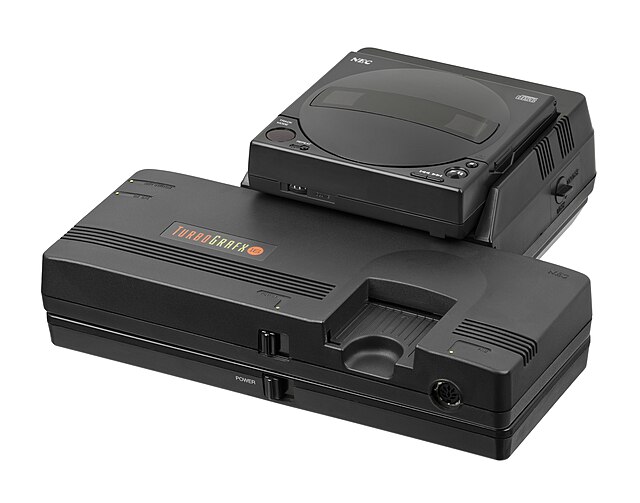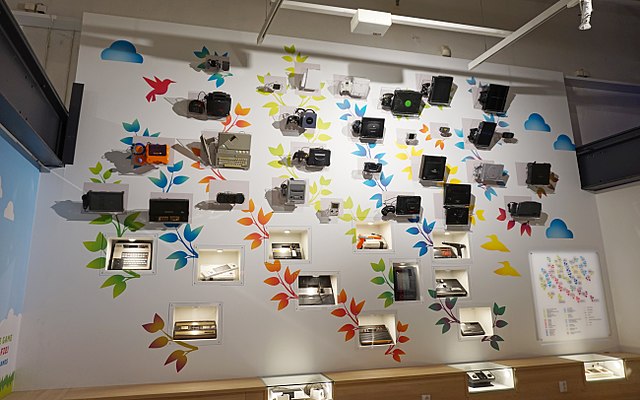The TurboGrafx-16, known as the PC Engine outside North America, is a home video game console designed by Hudson Soft and sold by NEC Home Electronics. It was the first console marketed in the fourth generation, commonly known as the 16-bit era, though the console has an 8-bit central processing unit (CPU) coupled with a 16-bit graphics processor. It was released in Japan in 1987 and in North America in 1989. In Europe the Japanese model was unofficially imported and distributed in the United Kingdom and France from 1988. In Japan, the system was launched as a competitor to the Famicom, but the delayed United States release meant that it ended up competing with the Sega Genesis and later the Super NES.
North American TurboGrafx-16 (top) and the original Japanese PC Engine (bottom)
Image: Turbo Grafx 16logo
Image: Turbo Grafx 16 Console Set
The TurboGrafx-16/PC Engine was the first video game console capable of playing CD-ROM games with an optional add-on.
A home video game console is a video game console that is designed to be connected to a display device, such as a television, and an external power source as to play video games. While initial consoles were dedicated units with only a few games fixed into the electronic circuits of the system, most consoles since support the use of swappable game media, either through game cartridges, optical discs, or through digital distribution to internal storage.
A collection of home video game consoles, arranged in chronological order from bottom to top, at The Finnish Museum of Games, Tampere





